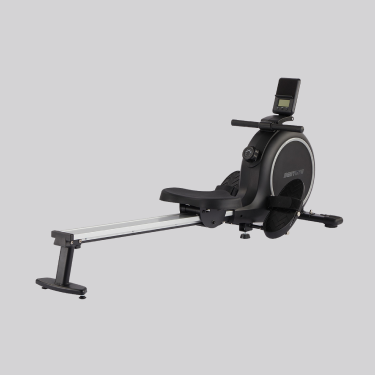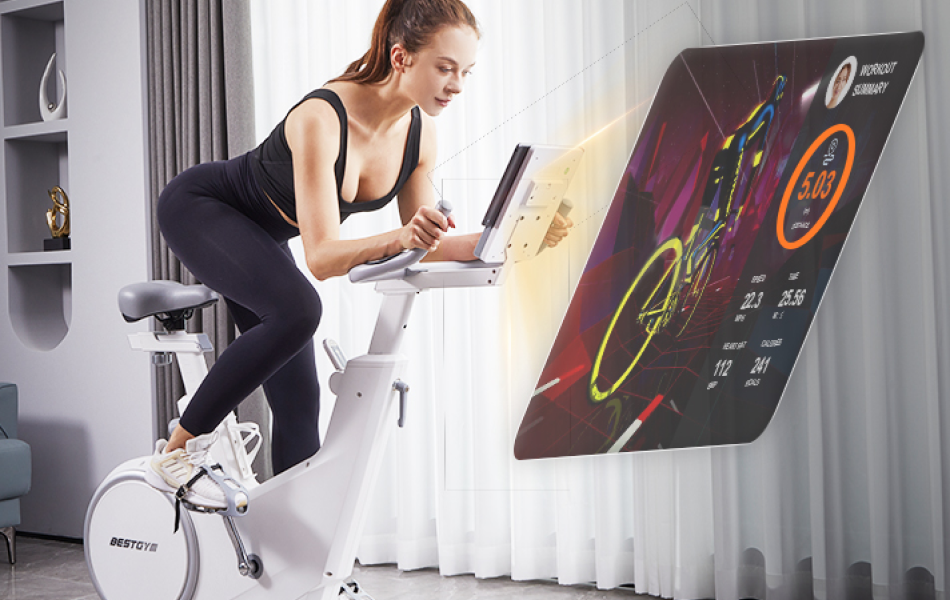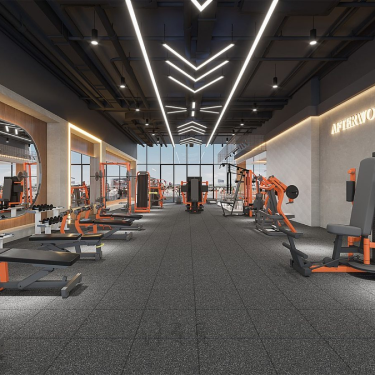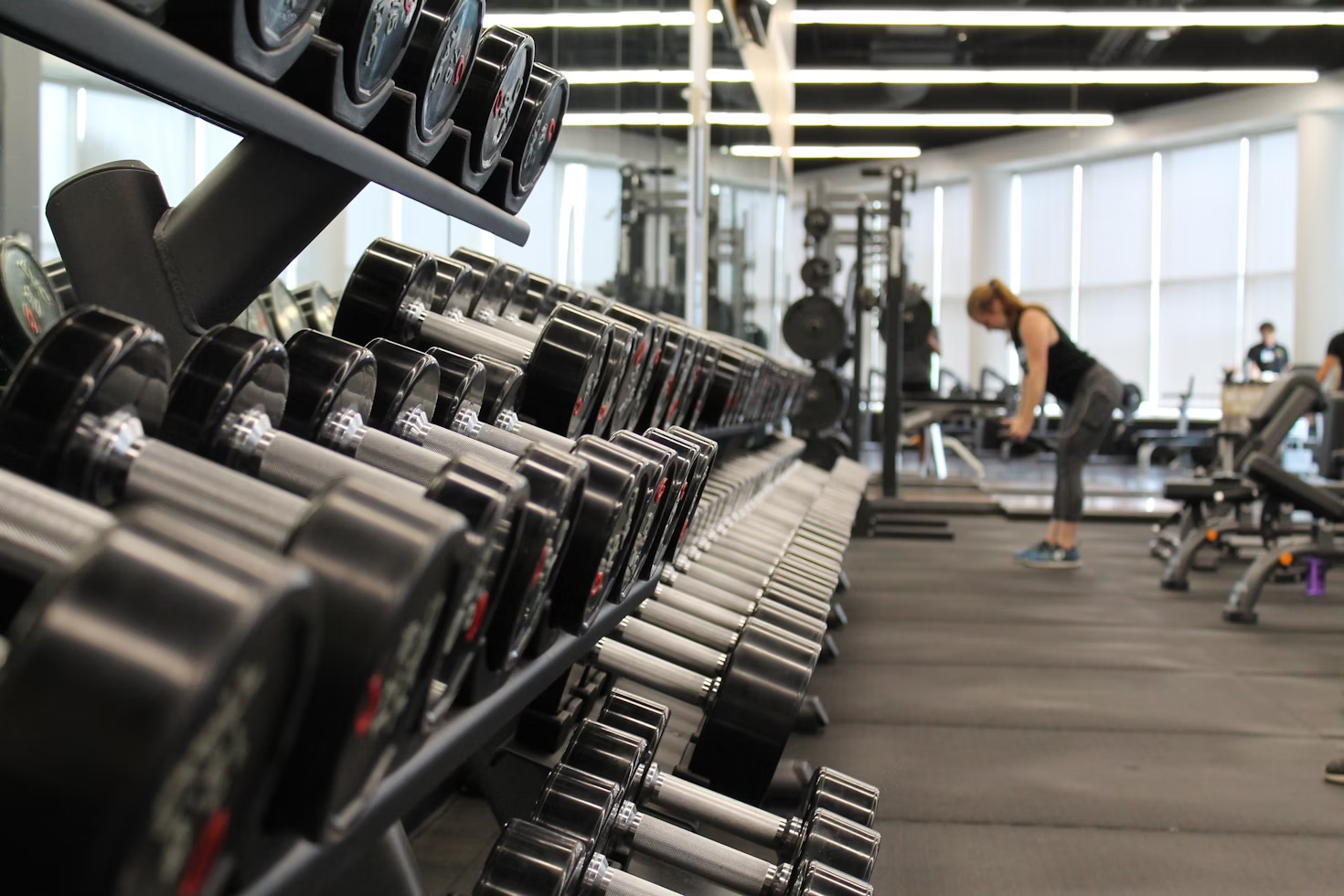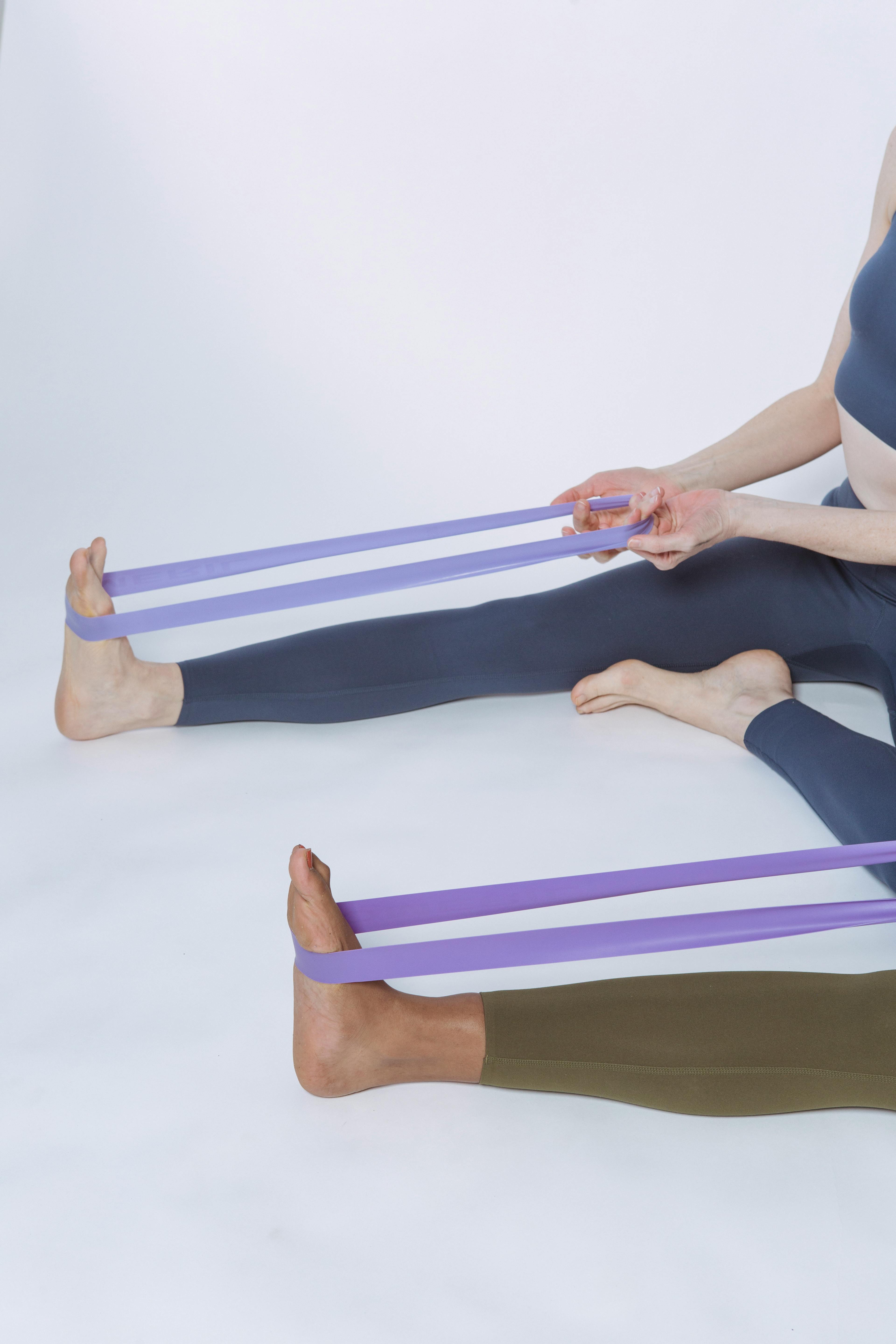Exercise Bike Health Benefits: From Toning Muscles to Burning Calories
The exercise bike, a staple in gyms and homes worldwide, offers numerous health benefits that go beyond mere calorie burning. From enhancing cardiovascular health to toning muscles, the versatility of this equipment makes it a valuable addition to any fitness routine. In this article, we will delve into the various health benefits of using an exercise bike, the different types of resistance exercise bike, and the overarching purpose of incorporating this machine into your fitness regimen.
What are the Health Benefits of Using an Exercise Bike?
The exercise bike offers a multitude of health benefits, making it an essential tool for anyone looking to improve their fitness and overall well-being. From enhancing cardiovascular health and burning calories to toning muscles and improving mental health, the advantages are extensive and well-documented. 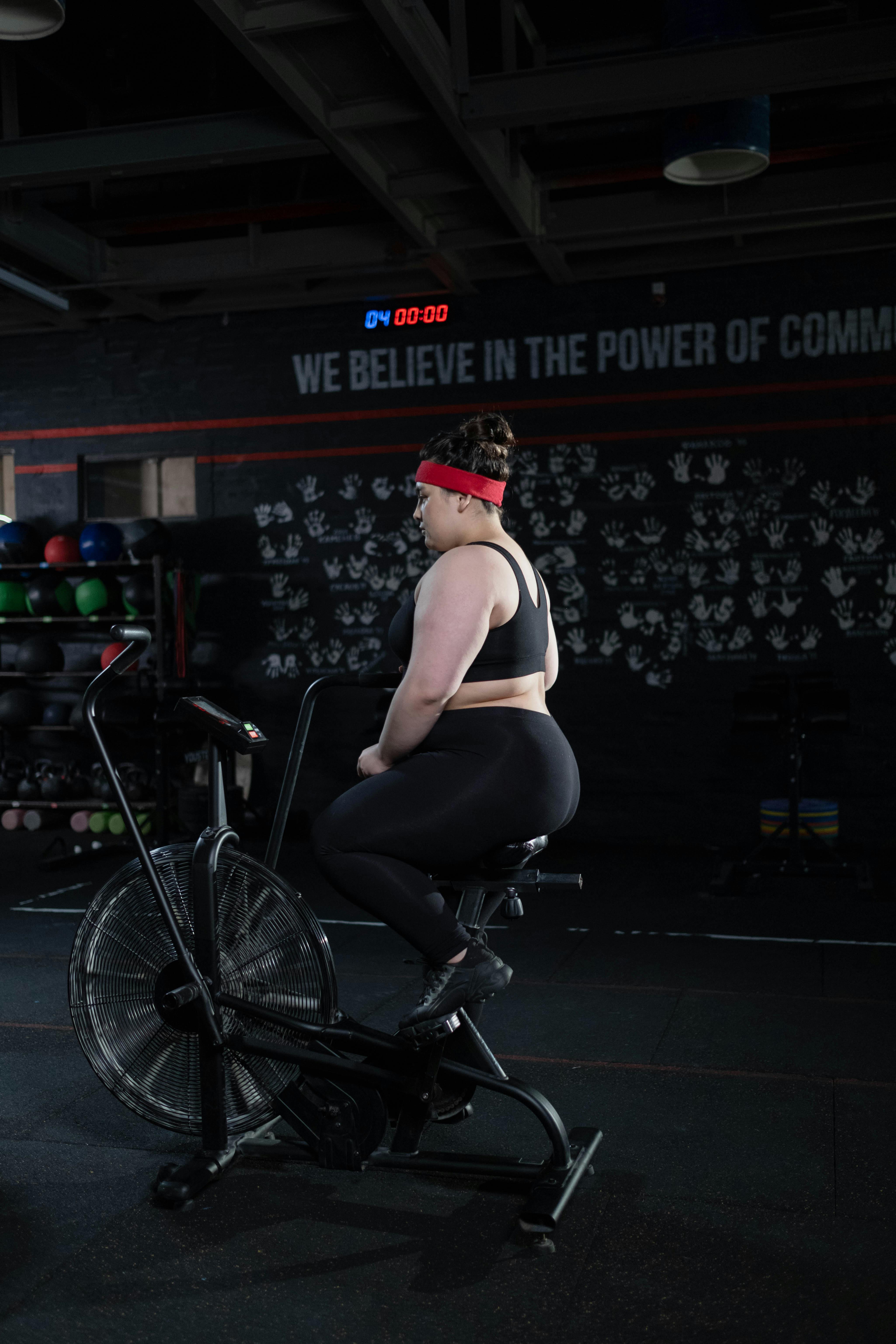
1. Cardiovascular Health Benefits
Enhancing Heart Health
One of the most significant exercise bike health benefits is the positive impact on cardiovascular health. Regular cycling helps strengthen the heart, improving its ability to pump blood efficiently throughout the body. This, in turn, enhances oxygen delivery to muscles and organs, which is crucial for overall health.
Lowering Blood Pressure and Cholesterol
Consistent use of an exercise bike can lead to lower blood pressure and cholesterol levels. Engaging in moderate to intense aerobic exercise like cycling helps reduce the levels of LDL (bad cholesterol) and increases HDL (good cholesterol). This balance is essential in preventing heart diseases and maintaining a healthy cardiovascular system.
Improving Circulation
Cycling promotes better blood circulation, which is vital for delivering nutrients and oxygen to cells while removing waste products. Enhanced circulation also helps in reducing the risk of developing conditions such as varicose veins and deep vein thrombosis.
2. Weight Management and Fat Burning
Calorie Burning Efficiency
The exercise bike is an excellent tool for burning calories, making it effective for weight management. Depending on the intensity and duration of the workout, cycling can burn between 400 to 600 calories per hour. This high caloric expenditure helps in creating a caloric deficit, essential for weight loss.
Fat Reduction
Besides burning calories, cycling also helps in reducing body fat, particularly in the abdominal region. Regular use of an exercise bike can lead to significant fat loss, contributing to a leaner physique and lower body mass index (BMI).
Boosting Metabolism
Engaging in regular cycling workouts boosts your metabolism, enabling your body to burn calories more efficiently even at rest. This metabolic increase is particularly beneficial for weight maintenance and preventing weight regain after losing it.
3. Muscle Toning and Strength
Lower Body Muscles
Cycling primarily targets the lower body muscles, including the quadriceps, hamstrings, calves, and glutes. The repetitive pedaling motion helps in toning and strengthening these muscles, leading to improved muscle definition and endurance.
Core Stability
While the legs do most of the work, maintaining proper posture on an exercise bike engages the core muscles. A strong core is essential for stability, balance, and reducing the risk of injuries during other physical activities.
Upper Body Engagement
Although the focus is on the lower body, some exercise bikes come with handlebars that provide an upper body workout. This dual-action mechanism helps in engaging the arms, shoulders, and back, offering a full-body workout experience.
4. Mental Health and Stress Relief
Reducing Stress and Anxiety
Exercise, in general, is known for its ability to reduce stress and anxiety, and cycling is no exception. The rhythmic motion of pedaling combined with the release of endorphins creates a natural mood booster, helping to alleviate feelings of stress and anxiety.
Improving Mental Focus and Concentration
Regular cycling sessions can improve mental focus and concentration. The increased blood flow to the brain during aerobic exercise enhances cognitive function and memory, making it easier to stay sharp and alert.
Promoting Better Sleep
Physical activity like cycling can also promote better sleep. Regular exercise helps in regulating sleep patterns, leading to improved sleep quality and duration, which is crucial for overall mental and physical health.
5. Purpose of Exercise Bike Workout
Versatile Training Tool
The primary purpose of an exercise bike is to provide a versatile training tool that can cater to various fitness goals. Whether you aim to lose weight, tone muscles, improve cardiovascular health, or enhance overall fitness, an exercise bike can be tailored to meet your specific needs.
Low-Impact Exercise
For individuals with joint issues or those recovering from injuries, the exercise bike offers a low-impact form of exercise. Unlike running or jumping, cycling puts minimal stress on the joints, making it a safer option for people with arthritis or other joint conditions.
Convenient and Accessible
An exercise bike is a convenient and accessible piece of equipment that can be used at home or in the gym. It allows for effective workouts regardless of weather conditions or time constraints, making it easier to stick to a regular exercise routine.
Customizable Workouts
Exercise bikes come with various pre-programmed workouts and resistance levels, allowing users to customize their sessions. Whether you prefer steady-state cardio, interval training, or hill climbs, an exercise bike can accommodate your preferences and fitness levels.
6. Preventive and Rehabilitative Benefits
Preventing Chronic Diseases
Regular use of an exercise bike can help in preventing chronic diseases such as diabetes, hypertension, and cardiovascular diseases. The combination of aerobic exercise and muscle strengthening plays a crucial role in maintaining a healthy body and reducing the risk of these conditions.
Rehabilitation and Recovery
Exercise bikes are widely used in rehabilitation programs for individuals recovering from surgeries or injuries. The controlled environment and adjustable resistance levels allow for gradual progression, helping patients regain strength, flexibility, and mobility without putting undue stress on their bodies. 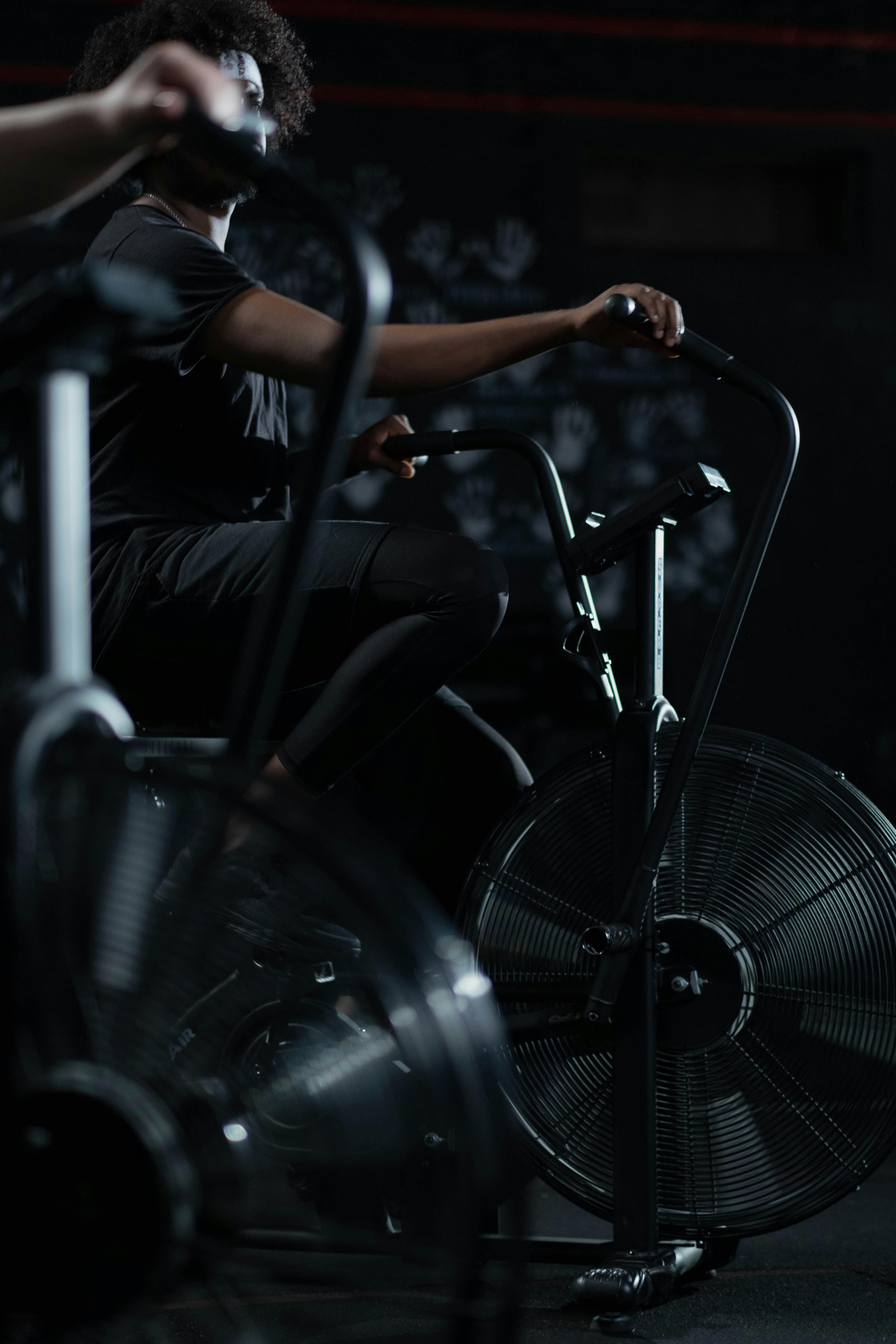
7. Social and Recreational Aspects
Group Cycling Classes
Many gyms offer group cycling classes, which can be a fun and motivating way to exercise. The energetic atmosphere, combined with upbeat music and a sense of camaraderie, makes these classes enjoyable and helps in maintaining a consistent workout routine.
Virtual Cycling Experiences
With advancements in technology, virtual cycling experiences have become increasingly popular. Platforms like Peloton and Zwift offer immersive experiences, allowing users to join live classes, participate in virtual races, and explore scenic routes from the comfort of their homes.
Family-Friendly Exercise
Exercise bikes are suitable for users of all ages, making them a family-friendly option. Encouraging family members to engage in cycling sessions can promote a healthy lifestyle and provide an opportunity for quality time together.
How to Maximize Your Fitness Purposes with an Exercise Bike?
The purpose of an upright fitness bike extends far beyond a simple workout tool; it’s a multifaceted instrument designed to help users achieve a wide range of fitness goals. Whether you’re aiming to lose weight, build muscle, improve cardiovascular health, or enhance overall wellness, the exercise bike can be tailored to fit your specific needs. Here’s how to make the most out of your exercise bike to maximize your fitness goals.
1. Setting Clear Fitness Objectives
Before hopping on an exercise bike, it’s crucial to establish clear and achievable fitness objectives. Determine whether your primary goal is weight loss, muscle toning, cardiovascular improvement, or endurance building. Having a specific target in mind will help you design a more effective and focused workout plan.
2. Customizing Workouts
One of the significant benefits of an exercise bike is its ability to cater to various workout preferences and fitness levels. Most modern exercise bikes come with pre-programmed workouts and adjustable resistance levels, allowing you to customize your sessions. For weight loss, consider high-intensity interval training (HIIT) to maximize calorie burn. If muscle toning is your goal, incorporate steady-state cycling with moderate resistance.
3. Utilizing Different Resistance Types
Understanding the types of exercise bike resistance—magnetic, direct-contact, fan-based, and flywheel—can help you choose the best bike for your needs. For instance, magnetic resistance offers a quiet and smooth ride, ideal for those who prefer a more controlled environment. Fan-based resistance, on the other hand, is excellent for high-intensity workouts and provides a more challenging experience as you pedal faster.
4. Tracking Progress
To stay motivated and monitor your improvement, keep track of your workouts. Many exercise bikes come with digital displays that provide real-time data on your speed, distance, heart rate, and calories burned. Use this information to set new goals and adjust your workouts accordingly. Additionally, consider using fitness apps or wearable devices to track your progress over time.
5. Incorporating Variety
Variety is key to preventing workout boredom and avoiding plateaus. Mix up your cycling sessions by changing the resistance levels, duration, and intensity. Try incorporating different workout styles such as hill climbs, interval training, and long-distance rides. Adding variety not only keeps your workouts interesting but also ensures that you’re continuously challenging your body.
6. Combining with Other Exercises
While the exercise bike is a powerful tool on its own, combining it with other forms of exercise can yield even better results. Integrate strength training, yoga, or pilates into your fitness routine to build a well-rounded fitness regimen. This combination helps in improving overall strength, flexibility, and endurance.
7. Ensuring Proper Form and Safety
To maximize the benefits of your exercise bike workouts and prevent injuries, ensure that you maintain proper form. Adjust the seat height so that your knees are slightly bent at the bottom of the pedal stroke. Keep your back straight and avoid leaning too far forward. Start with a warm-up to prepare your muscles and finish with a cool-down to aid recovery.
8. Staying Consistent
Consistency is crucial in achieving any fitness goal. Make a schedule and stick to it, whether it’s daily, several times a week, or whatever suits your lifestyle. Even short, regular sessions can lead to significant improvements over time. Remember that consistency will help you build endurance, strength, and overall fitness gradually.
9. Taking Advantage of Technological Advancements
Modern exercise bikes often come equipped with advanced technology, including virtual reality cycling and online classes. Platforms like Peloton offer live and on-demand classes that bring the experience of a spin studio into your home. Virtual cycling apps like Zwift allow you to participate in virtual races and ride through scenic routes, making your workouts more engaging and enjoyable.
Maximizing your fitness goals with an exercise bike involves more than just pedaling. By setting clear objectives, customizing your workouts, understanding resistance types, tracking progress, incorporating variety, combining with other exercises, maintaining proper form, staying consistent, and leveraging technological advancements, you can fully harness the potential of this versatile machine. Whether you're a beginner or a seasoned fitness enthusiast, an exercise bike can be an invaluable tool in your journey towards better health and fitness.
Read more: Different Types of Cycling Machines: Which One Fits Your Needs?
What is the Best Resistance for an Exercise Bike?
Choosing the best resistance for an exercise bike depends on your fitness goals, preferences, and workout style. Understanding the types of exercise bike resistance available will help you make an informed decision that aligns with your needs. Here’s a detailed look at the various resistance types and their benefits.
Different Types of Exercise Bike Resistance
1. Magnetic Resistance
Magnetic resistance uses magnets positioned around the flywheel to create resistance. By adjusting the position of the magnets, the resistance can be increased or decreased.
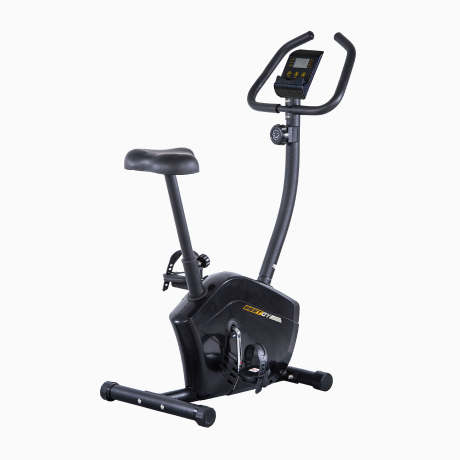
Benefits:
- Smooth and Quiet Operation: Magnetic resistance offers a smooth pedaling experience with minimal noise, making it ideal for home use, especially if you share your living space.
- Precise Control: The resistance levels can be easily adjusted, often with digital controls, allowing for precise and consistent workouts.
- Low Maintenance: Since there are no direct contact parts that wear out, magnetic resistance bikes require less maintenance compared to other types.
Best For:
- Users who prefer a quiet workout environment.
- Individuals who want precise control over their workout intensity.
- Those looking for a low-maintenance exercise bike.
2. Direct-Contact Resistance
Direct-contact resistance involves brake pads that come into contact with the flywheel to create friction and resistance. The resistance is adjusted by tightening or loosening the brake pads against the flywheel.
Benefits:
- High-Intensity Workouts: Direct-contact resistance provides a high level of resistance, making it suitable for intense training sessions.
- Realistic Cycling Feel: The friction mechanism simulates the experience of riding an outdoor bike, offering a more authentic cycling feel.
Best For:
- Cyclists who want to replicate outdoor biking conditions.
- Individuals focused on high-intensity training and muscle building.
- Users comfortable with performing regular maintenance to replace worn-out brake pads.
3. Fan-Based Resistance
Fan-based or air resistance utilizes a large fan to generate resistance. As you pedal faster, the fan blades push against the air, creating more resistance.
Benefits:
- Dynamic Resistance: The resistance automatically increases as you pedal faster, providing a more challenging workout as your speed and effort increase.
- Effective for HIIT: The variable resistance makes fan-based bikes perfect for high-intensity interval training (HIIT) because the resistance adapts to your output.
Best For:
- Users who enjoy intense, variable resistance workouts.
- Individuals focusing on cardiovascular fitness and calorie burning.
- Those who don’t mind the noise generated by the fan blades.
4. Flywheel Resistance
Flywheel resistance involves a weighted flywheel that creates momentum as you pedal. The resistance can be adjusted manually or electronically, depending on the bike model.
Benefits:
- Smooth Ride: The weighted flywheel offers a smooth and consistent ride, similar to outdoor cycling.
- Versatile Workouts: Flywheel bikes can cater to various workout styles, from endurance training to sprints.
Best For:
- Users who want a smooth and natural cycling experience.
- Those looking for versatility in their workouts.
- Cyclists who enjoy long-distance and endurance training.
Choosing the Best Exercise Bike Resistance for Your Needs
When selecting the best resistance for your exercise bike, consider the following factors:
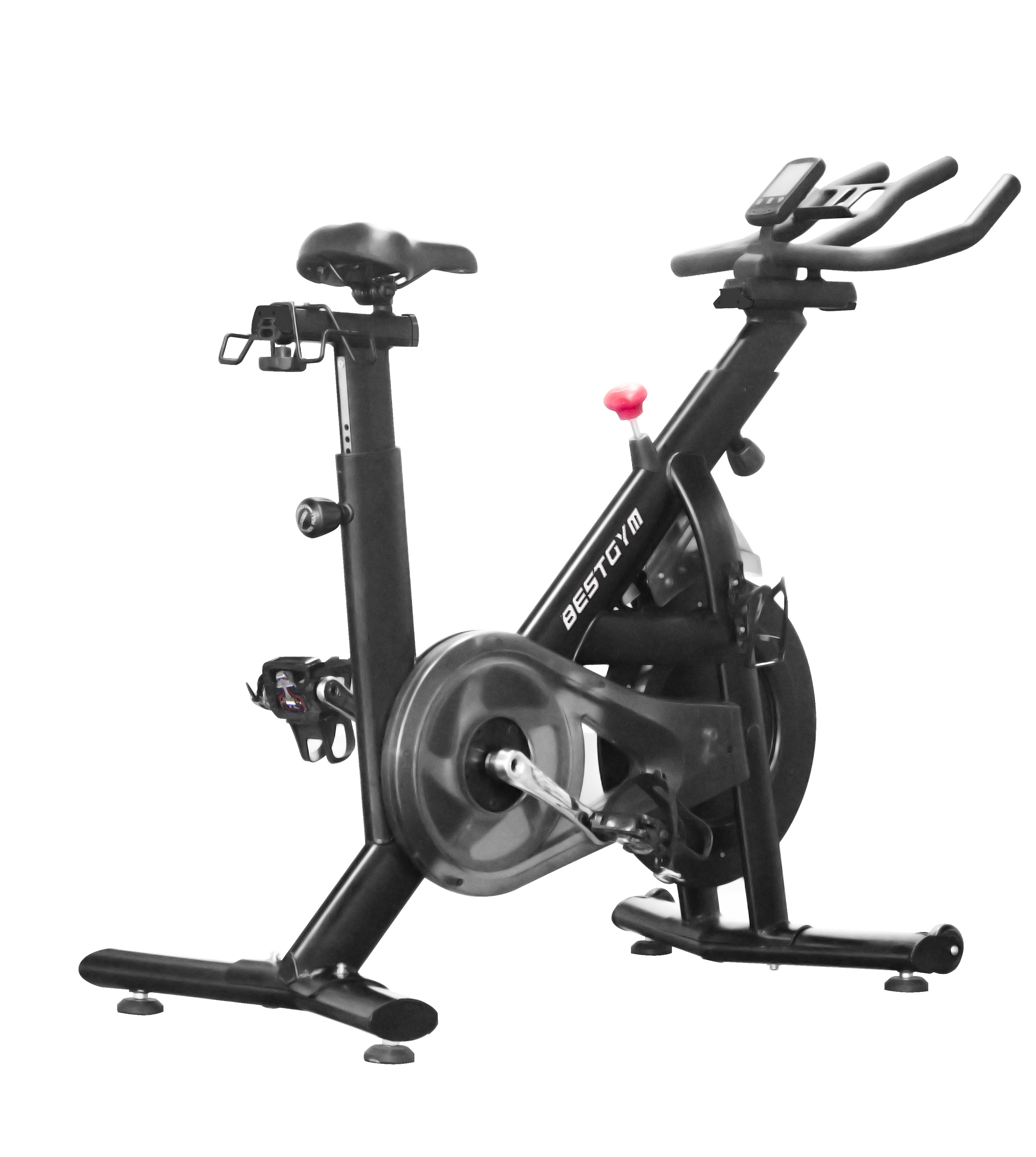
1. Fitness Goals
- Weight Loss and Cardio Fitness: If your primary goal is to lose weight or improve cardiovascular health, fan-based and magnetic resistance bikes are excellent choices due to their ability to provide challenging, calorie-burning workouts. Click to learn about benefits of an air bike!
- Muscle Toning and Strength: For those focused on muscle toning and strength building, direct-contact resistance bikes offer the high levels of resistance needed for intense workouts.
- Versatility: If you seek a versatile bike that can adapt to various workout styles, a flywheel resistance bike is ideal.
2. Noise Level
- Quiet Workouts: Magnetic resistance bikes are the best option for quiet workouts, making them suitable for shared living spaces or late-night exercise sessions.
- Noise Tolerance: If noise is not a concern, fan-based resistance bikes provide a dynamic and engaging workout experience.
3. Maintenance
- Low Maintenance: Magnetic and flywheel resistance bikes typically require less maintenance compared to direct-contact bikes, which have parts that wear out over time.
- Willingness to Perform Maintenance: If you’re comfortable with regular maintenance, a direct-contact resistance bike can offer a more authentic cycling feel.
4. Budget
- Cost Considerations: Magnetic resistance bikes tend to be more expensive due to their advanced technology, while direct-contact and fan-based bikes are often more budget-friendly.
- Investment in Quality: Consider investing in a higher-quality bike with magnetic resistance if you prefer low maintenance and a quieter ride.
The best resistance for an exercise bike ultimately depends on your individual preferences, fitness goals, and workout environment. Understanding the types of exercise bike resistance—magnetic, direct-contact, fan-based, and flywheel—enables you to choose the bike that aligns best with your needs. Exercise bike resistance type can help you achieve your fitness goals effectively and enjoyably.
Exercise Bike Machine Benefits FAQs
Using an exercise bike is a popular and effective way to improve overall fitness, lose weight, and maintain a healthy lifestyle. However, many people have questions about how to maximize the benefits of this versatile equipment. Below, we address some of the most frequently asked questions about exercise bike machine benefits to help you get the most out of your cycling workouts. Want to shop exercise bike with low price and good quality?
1. Is 30 Minutes a Day on an Exercise Bike Enough?
Yes, 30 minutes a day on an exercise bike can be sufficient for achieving various health benefits. This duration is ideal for maintaining cardiovascular health, aiding in weight loss, and improving muscle tone. Depending on your fitness level and goals, you can adjust the intensity and resistance to make your 30-minute workout more challenging and effective.
2. Is an Exercise Bike Good for Health?
Absolutely. Regular use of an exercise bike offers numerous health benefits, including improved cardiovascular health, increased muscle strength, better joint mobility, and enhanced mental well-being. It’s a low-impact exercise, making it suitable for people of all fitness levels and those with joint issues.
3. Is a Stationary Bike Good for Belly Fat?
Yes, a stationary bike can be effective for reducing belly fat as part of a comprehensive fitness and diet plan. Cardiovascular exercises, like cycling, help burn calories and reduce overall body fat. Combining regular cycling sessions with a balanced diet and strength training can lead to significant reductions in abdominal fat.
4. Is It Good to Use an Exercise Bike Every Day?
Using an exercise bike every day can be beneficial, provided you listen to your body and avoid overtraining. Daily moderate-intensity workouts can help maintain cardiovascular health, support weight loss, and improve endurance. However, it’s important to incorporate rest days and vary your workout intensity to prevent injury and allow muscle recovery.
5. Is It Better to Pedal Faster or with More Resistance?
The choice between pedaling faster or with more resistance depends on your fitness goals. Pedaling faster at a lower resistance is ideal for cardiovascular endurance and burning calories. Increasing resistance, even at a slower pace, helps build muscle strength and tone. For a balanced workout, incorporate both high-speed, low-resistance sessions and slower, high-resistance intervals.
6. What Are the Best Settings for an Exercise Bike?
The best settings for an exercise bike vary based on individual fitness levels and goals. Generally, you should:
- Adjust the seat height to ensure a slight bend in your knee when the pedal is at its lowest point.
- Set the resistance to a level that challenges you without causing strain.
- Choose a workout program or manual settings that align with your fitness objectives, such as fat burning, endurance training, or interval workouts.
7. What Intensity Should a Stationary Bike Be?
The intensity of your stationary bike workout should match your fitness goals and current fitness level. For beginners, moderate intensity is recommended, where you can maintain a conversation but still feel challenged. For more advanced users, higher intensity workouts, including interval training, can be more effective. Monitor your heart rate to stay within your target zone for optimal results.
In summary, the exercise bike offers a multitude of health benefits, making it an essential tool for anyone looking to improve their fitness and overall well-being. From enhancing cardiovascular health and burning calories to toning muscles and improving mental health, the advantages are extensive and well-documented. Understanding the different types of exercise bike resistance and the purpose of incorporating this machine into your routine can help you make the most of your workouts. Whether you're a fitness enthusiast or a beginner, the exercise bike provides a versatile, low-impact, and effective way to achieve your health and fitness goals.


